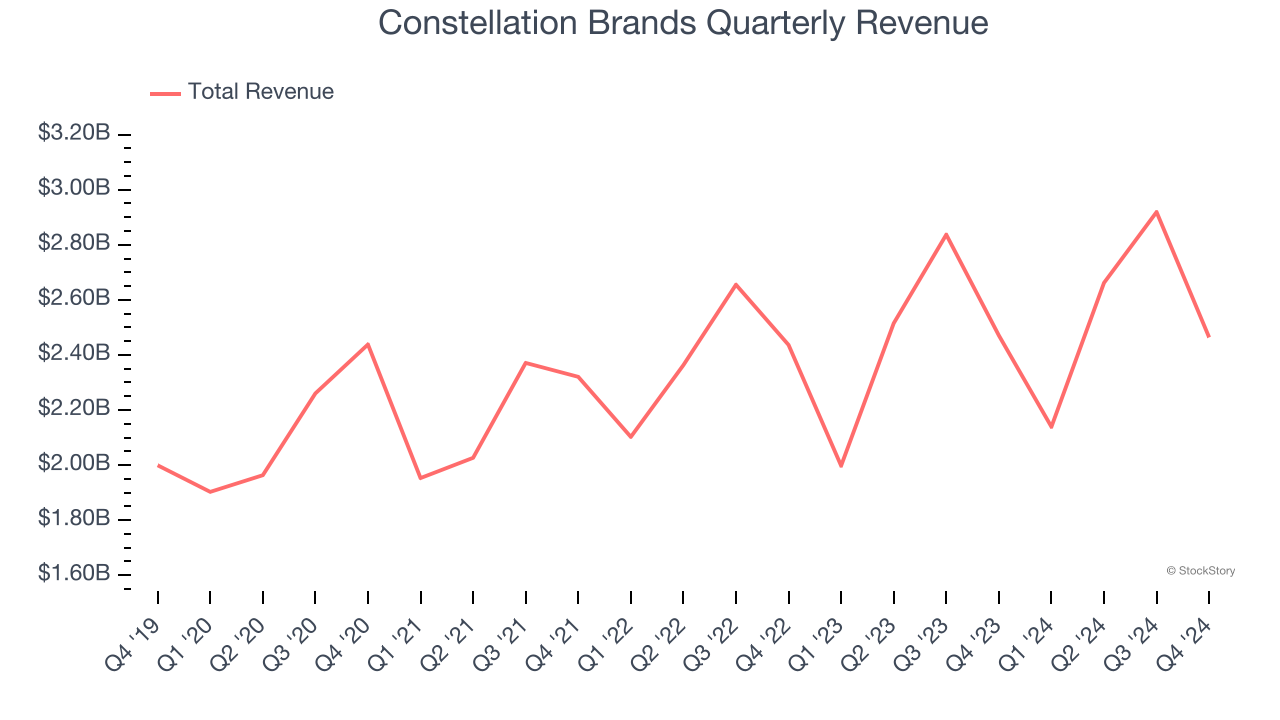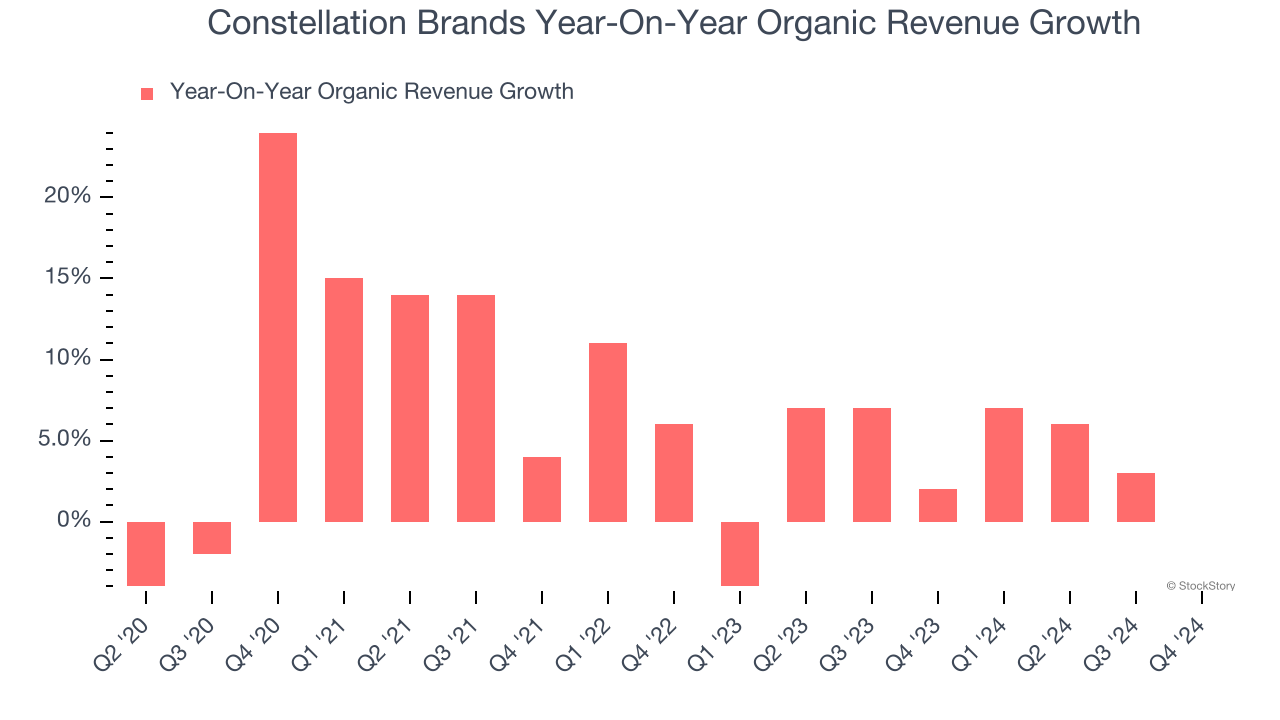
Beer, wine, and spirits company Constellation Brands (NYSE: STZ) missed Wall Street’s revenue expectations in Q4 CY2024, with sales flat year on year at $2.46 billion. Its non-GAAP profit of $3.25 per share was 1.9% below analysts’ consensus estimates.
Is now the time to buy Constellation Brands? Find out by accessing our full research report, it’s free.
Constellation Brands (STZ) Q4 CY2024 Highlights:
- Revenue: $2.46 billion vs analyst estimates of $2.53 billion (flat year on year, 2.8% miss)
- Adjusted EPS: $3.25 vs analyst expectations of $3.31 (1.9% miss)
- Adjusted EBITDA: $912.3 million vs analyst estimates of $956 million (37% margin, 4.6% miss)
- Management lowered its full-year Adjusted EPS guidance to $13.60 at the midpoint, a 0.7% decrease
- Operating Margin: 32.2%, in line with the same quarter last year
- Free Cash Flow Margin: 18.5%, up from 16% in the same quarter last year
- Organic Revenue was flat year on year (2% in the same quarter last year)
- Market Capitalization: $39.81 billion
Company Overview
With a presence in more than 100 countries, Constellation Brands (NYSE: STZ) is a globally renowned producer and marketer of beer, wine, and spirits.
Beverages, Alcohol, and Tobacco
These companies' performance is influenced by brand strength, marketing strategies, and shifts in consumer preferences. Changing consumption patterns are particularly relevant and can be seen in the rise of cannabis, craft beer, and vaping or the steady decline of soda and cigarettes. Companies that spend on innovation to meet consumers where they are with regards to trends can reap huge demand benefits while those who ignore trends can see stagnant volumes. Finally, with the advent of the social media, the cost of starting a brand from scratch is much lower, meaning that new entrants can chip away at the market shares of established players.
Sales Growth
A company’s long-term sales performance signals its overall quality. Even a bad business can shine for one or two quarters, but a top-tier one grows for years.
Constellation Brands is one of the larger consumer staples companies and benefits from a well-known brand that influences consumer purchasing decisions. However, its scale is a double-edged sword because there are only a finite number of major retail partners, placing a ceiling on its growth. To accelerate sales, Constellation Brands must lean into newer products.
As you can see below, Constellation Brands’s 5.5% annualized revenue growth over the last three years was tepid. This shows it failed to generate demand in any major way and is a rough starting point for our analysis.

This quarter, Constellation Brands missed Wall Street’s estimates and reported a rather uninspiring 0.3% year-on-year revenue decline, generating $2.46 billion of revenue.
Looking ahead, sell-side analysts expect revenue to grow 6.3% over the next 12 months, similar to its three-year rate. This projection is above the sector average and indicates its newer products will help support its historical top-line performance.
Software is eating the world and there is virtually no industry left that has been untouched by it. That drives increasing demand for tools helping software developers do their jobs, whether it be monitoring critical cloud infrastructure, integrating audio and video functionality, or ensuring smooth content streaming. Click here to access a free report on our 3 favorite stocks to play this generational megatrend.
Organic Revenue Growth
When analyzing revenue growth, we care most about organic revenue growth. This metric captures a business’s performance excluding one-time events such as mergers, acquisitions, and divestitures as well as foreign currency fluctuations.
The demand for Constellation Brands’s products has generally risen over the last two years but lagged behind the broader sector. On average, the company’s organic sales have grown by 3.5% year on year. 
In the latest quarter, Constellation Brands’s year on year organic sales were flat. This was a meaningful deceleration from its historical levels. We’ll be watching closely to see if Constellation Brands can reaccelerate growth.
Key Takeaways from Constellation Brands’s Q4 Results
We struggled to find many resounding positives in these results. Its EBITDA missed and its organic revenue fell short of Wall Street’s estimates. Overall, this was a softer quarter. The stock traded down 3.2% to $212.12 immediately after reporting.
The latest quarter from Constellation Brands’s wasn’t that good. One earnings report doesn’t define a company’s quality, though, so let’s explore whether the stock is a buy at the current price. If you’re making that decision, you should consider the bigger picture of valuation, business qualities, as well as the latest earnings. We cover that in our actionable full research report which you can read here, it’s free.

